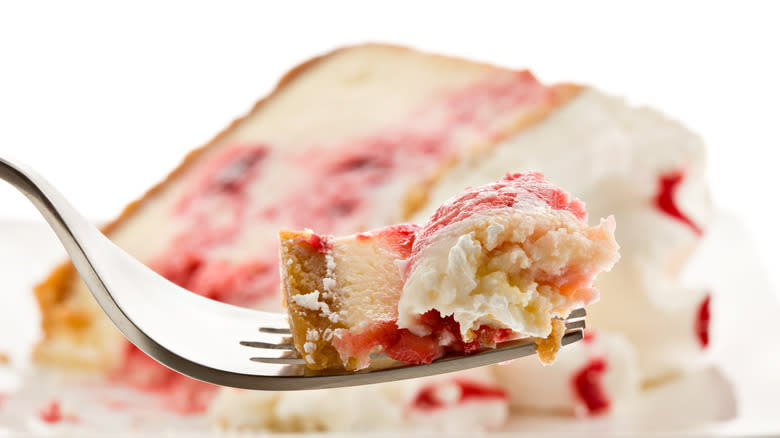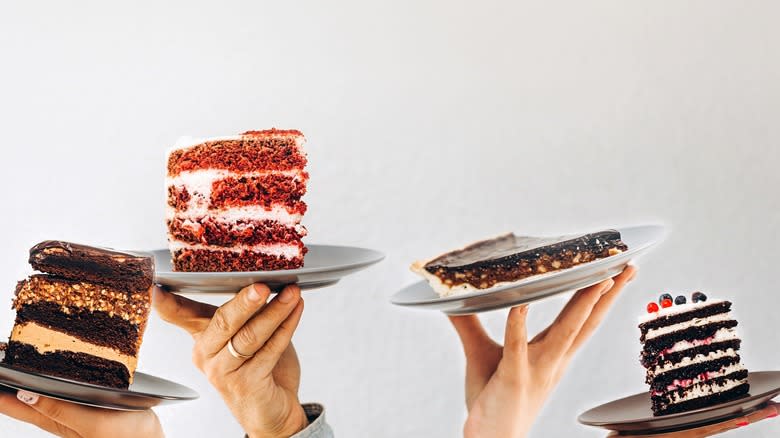Dehydrated Cake Gives The Classic Dessert A Crunchy Twist

Crunchy birthday to you! Wait, what? Imagine taking a bite of cake, but instead of sinking your teeth into a delicate, melt-in-your-mouth, spongey forkful, they're met with an audible, surprisingly pleasant crackle. No, this isn't a recipe out of an astronaut's cookbook.
Dehydrated cake — often compared to cake rusk — is pretty much exactly what it sounds like: a culinary creation that transforms the traditional succulent, fluffy cake into a shelf-stable, portable, and long-lasting snack. This process involves removing moisture from a freshly baked cake, resulting in a lightweight, dry, and preserved version of the beloved dessert.
The concept of dehydrating cakes has gained popularity, thanks to its convenience and versatility. Making dehydrated cake starts with any ol' cake recipe — chocolate, yellow, red velvet, carrot, you name it. After fully baking and cooling the cake, it is then sliced into thin, uniform slabs or cubes. These portions are then placed in a food dehydrator or an oven set to a low temperature, typically around 125 degrees. The goal is to very slowly eliminate moisture from the cake without cooking it further. The dehydrating process can take several hours, during which the cake undergoes a significant transformation. The result? A crispy cake that tastes exactly like the real thing but feels wafer-esque.
Read more: 12 Popular Ice Cream Brands, Ranked Worst To Best
Dehydrated Cake Is A Science Experiment Worth Trying

Dehydrating cake maintains the original flavor, but in a concentrated form. The absence of moisture seemingly intensifies the taste, creating a burst of flavor with each brittle bite. One of the more remarkable aspects of dehydrated cake is its versatility. It can be consumed as a standalone snack, crumbled as a topping for ice cream or yogurt, or rehydrated by adding a small amount of water, milk, or coffee. Rehydration softens the cake, allowing it to regain some of its original texture.
Dehydrated cake offers a novel way to enjoy the flavors of traditional cake in a portable, long-lasting format. Pieces can be stored for an extended period without refrigeration, making them an ideal treat for camping trips, long hikes, or an afternoon pick-me-up. Its ability to retain the essence of the original dessert while providing convenience and shelf-stability makes it an intriguing option for both outdoor enthusiasts and those looking for a unique twist on the iconic indulgence. Defying odds, dehydrated cake has carved out its own sweet niche.
Read the original article on Mashed.

